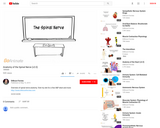
Short video on the anatomy of a spinal nerve for anatomy and physiology.
- Subject:
- Anatomy/Physiology
- Applied Science
- Health, Medicine and Nursing
- Life Science
- Material Type:
- Activity/Lab
- Author:
- Dr. Bruce Forciea
- Date Added:
- 04/05/2018

Short video on the anatomy of a spinal nerve for anatomy and physiology.

This resource is a video abstract of a research paper created by Research Square on behalf of its authors. It provides a synopsis that's easy to understand, and can be used to introduce the topics it covers to students, researchers, and the general public. The video's transcript is also provided in full, with a portion provided below for preview:
"Learning something new not only changes our perspectives and behavior – it actually changes the structure of our brains. Memories and experiences are recorded in the brain by altering the physical connections between neurons. Until recently, however, the protein signals that cause these tiny structural changes were too small to measure with available imaging methods. But researchers at the Max Planck Florida Institute for Neuroscience created ultra-sensitive sensors and revealed the activity of two of the proteins that write memories into neural circuits in the brain. Individual neurons have many branches, or dendrites. And each dendrite can be covered with thousands of tiny bumps called spines, where messages are received from other neurons. Changes in spine size are one way memories are recorded-when lots of messages are being passed and a spine is very active, it gets bigger. Many proteins need to be activated to make spines grow..."
The rest of the transcript, along with a link to the research itself, is available on the resource itself.

Biology is designed for multi-semester biology courses for science majors. It is grounded on an evolutionary basis and includes exciting features that highlight careers in the biological sciences and everyday applications of the concepts at hand. To meet the needs of today’s instructors and students, some content has been strategically condensed while maintaining the overall scope and coverage of traditional texts for this course. Instructors can customize the book, adapting it to the approach that works best in their classroom. Biology also includes an innovative art program that incorporates critical thinking and clicker questions to help students understand—and apply—key concepts.

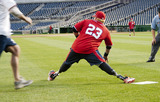
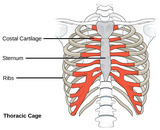
By the end of this section, you will be able to:Discuss the different types of skeletal systemsExplain the role of the human skeletal systemCompare and contrast different skeletal systems
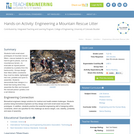
Students build small-sized prototypes of mountain rescue litters rescue baskets for use in hard-to-get-to places, such as mountainous terrain to evacuate an injured person (modeled by a potato) from the backcountry. Groups design their litters within constraints: they must be stable, lightweight, low-cost, portable and quick to assemble. Students demonstrate their designs in a timed test during which they assemble the litter and transport the rescued person (potato) over a set distance.

Short video on spine and ribcage anatomy for anatomy and physiology.
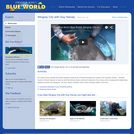
For more than twenty years, people have been feeding a large group of friendly stingrays at a place in the Cayman Islands. In this video, Jonathan travels to Grand Cayman to meet up with the famous marine artist and researcher Dr. Guy Harvey who is studying the relationship between humans and stingrays. He even shows Jonathan how to hold a stingray safely in his arms. Please see the accompanying study guide for educational objectives and discussion points.
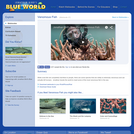
While most fish are completely harmless to people, there are some species that are mildly to extremely venomous and can actually kill humans. In this video, Jonathan travels the world to meet some of the most venomous fish in the sea. Please see the accompanying study guide for educational objectives and discussion points.